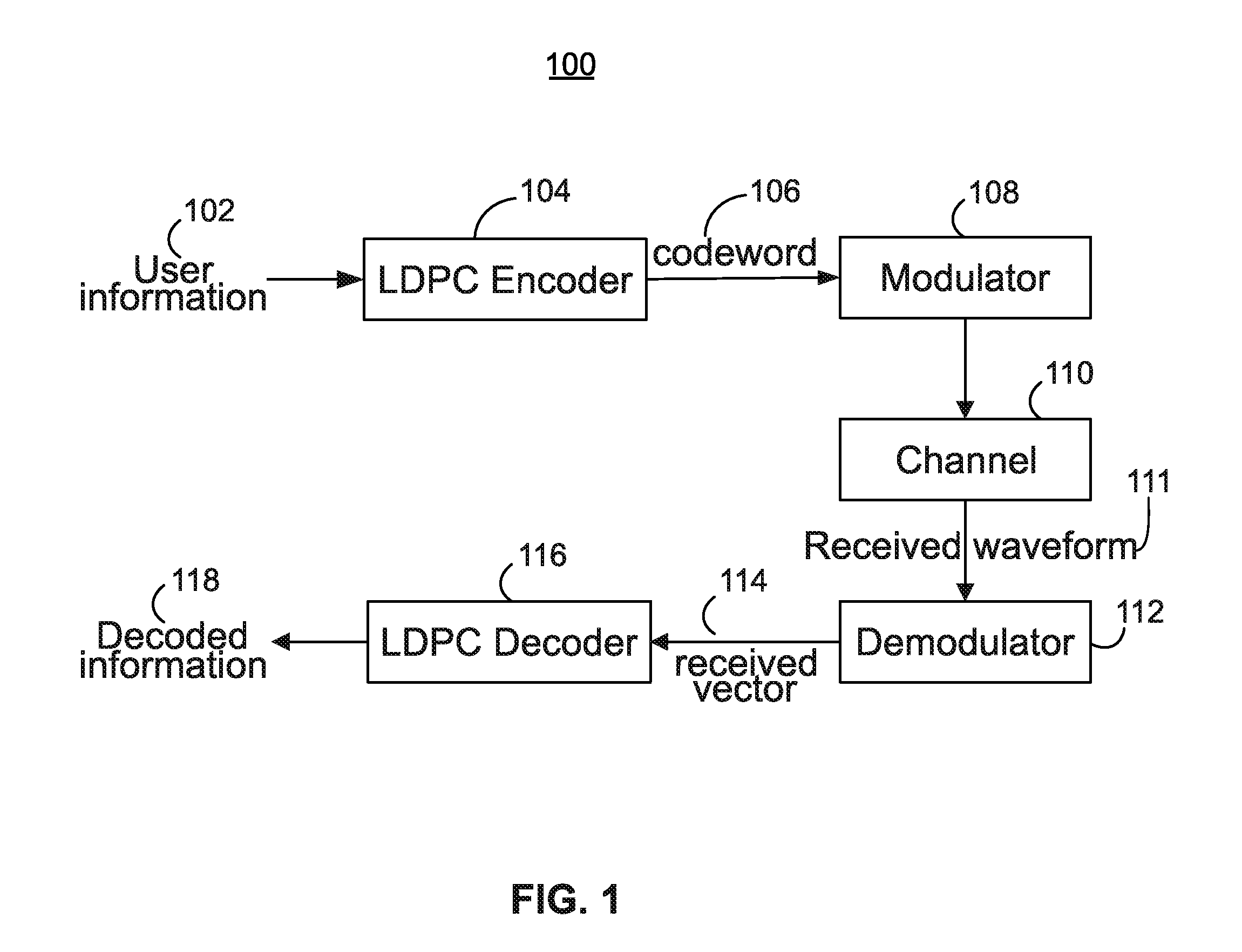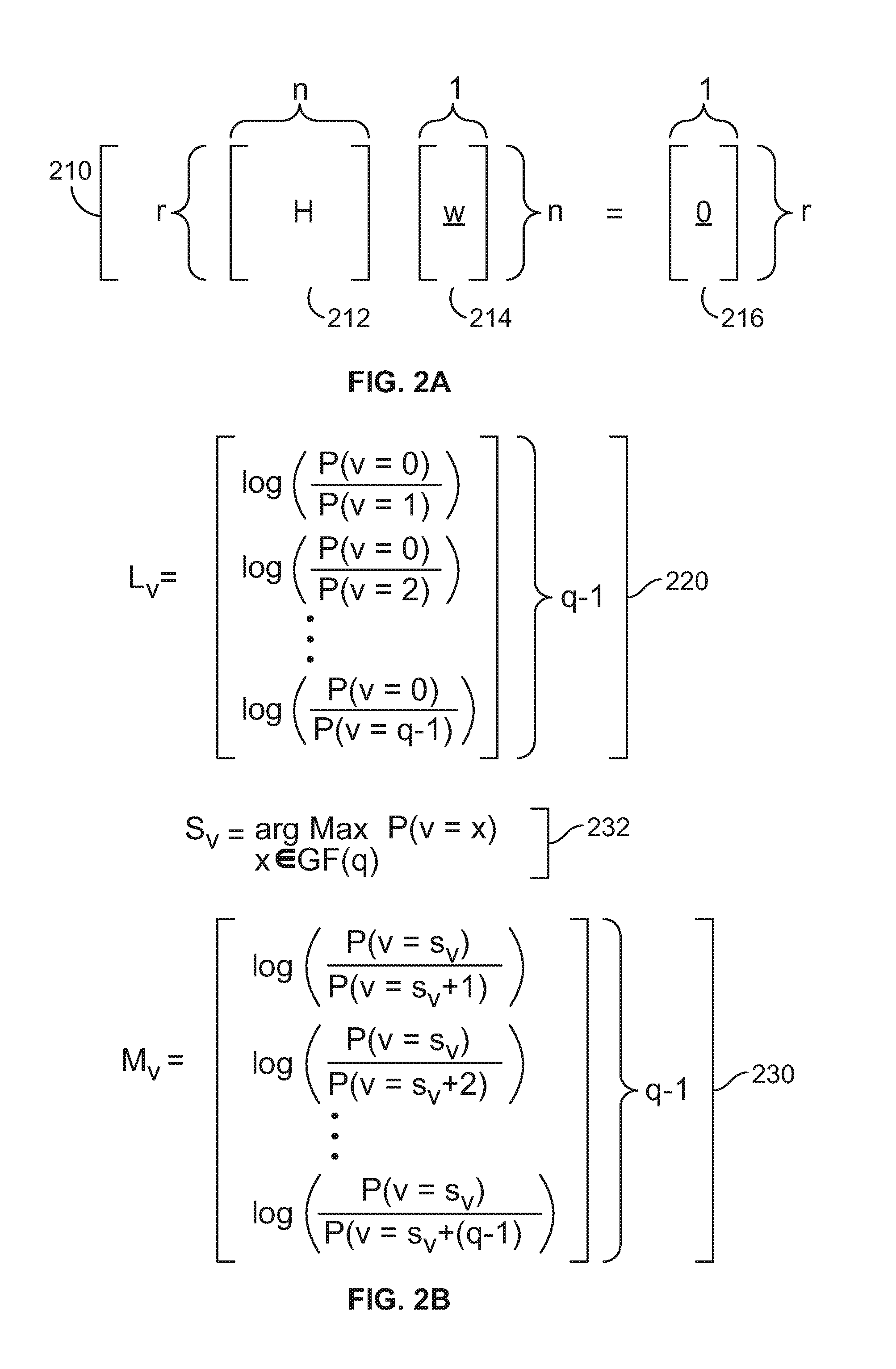Non-binary LDPC code decoder
a non-binary, code decoding technology, applied in the field of data decoding, can solve the problems of difficult to determine, difficult inability to take advantage of information relating groups of several of the transmitted binary bits, so as to improve the computational efficiency and decoding ability, and improve the application performance
- Summary
- Abstract
- Description
- Claims
- Application Information
AI Technical Summary
Benefits of technology
Problems solved by technology
Method used
Image
Examples
Embodiment Construction
[0026]As used herein, “information” and “data” refer to any unit or aggregate of energy or signals that contain some meaning or usefulness. Encoding may generally refer to the process of generating data in a manner that facilitates subsequent detection and / or correction of errors in the data, while decoding may generally refer to the counterpart process of detecting and / or correcting the errors. The elements of a coding system that perform encoding and decoding are likewise referred to as encoders and decoders, respectively. Systems and methods related to non-binary LDPC codes and non-binary LDPC decoders are provided for increased information relating groups of codeword bits, increased computational efficiency, and improved application performance. In applications or devices where information may be altered by interference signals or other phenomena, error-correction codes, such as non-binary LDPC codes, may provide a measured way to protect information against such interference.
[0...
PUM
 Login to View More
Login to View More Abstract
Description
Claims
Application Information
 Login to View More
Login to View More - R&D
- Intellectual Property
- Life Sciences
- Materials
- Tech Scout
- Unparalleled Data Quality
- Higher Quality Content
- 60% Fewer Hallucinations
Browse by: Latest US Patents, China's latest patents, Technical Efficacy Thesaurus, Application Domain, Technology Topic, Popular Technical Reports.
© 2025 PatSnap. All rights reserved.Legal|Privacy policy|Modern Slavery Act Transparency Statement|Sitemap|About US| Contact US: help@patsnap.com



